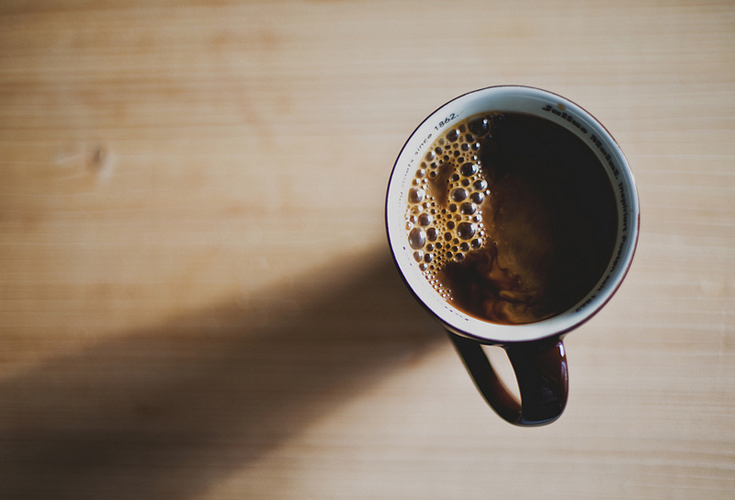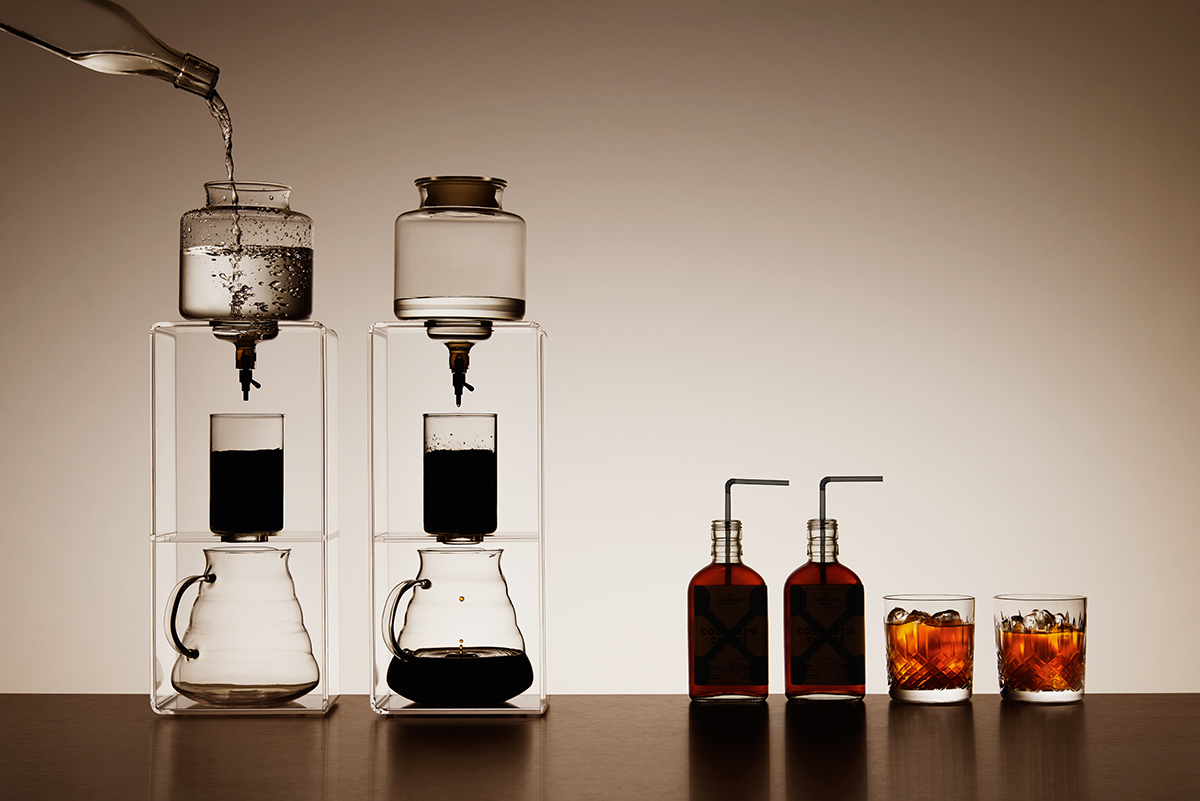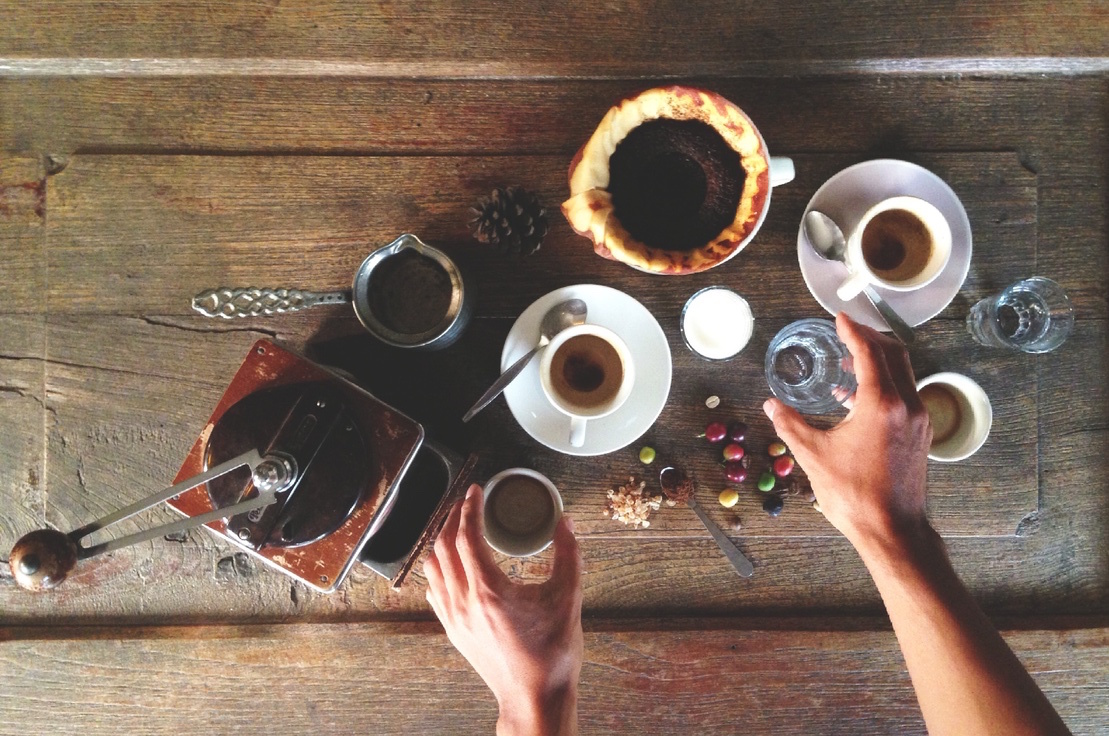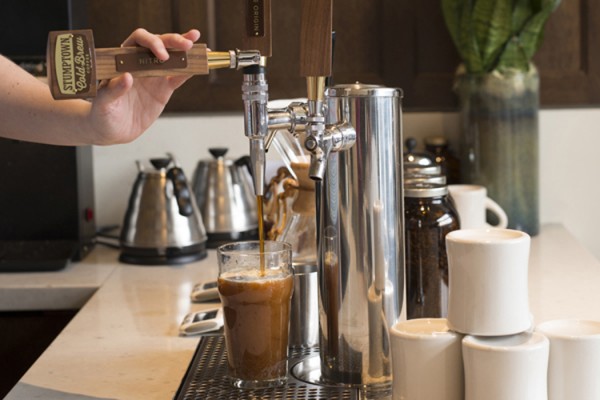Professional research tells you: coffee cancer or cancer?
For professional baristas, please follow the coffee workshop (Wechat official account cafe_style)
Taiwanese drink 2.17 billion cups a year, and the title "Coffee is listed as a Class 2B carcinogen by the World Health Organization" must be a blow to all coffee lovers, and most people still maintain a skeptical attitude. However, it is impractical to rely solely on the idea or practice of food anti-cancer or anti-cancer, so this article first guides readers to calmly analyze the hidden information behind this news, and then further explains the relationship between coffee and cancer:
What is the significance of class 2B carcinogens?
Why does coffee cause cancer?
Drink a moderate amount of coffee, but what is the "amount"?

Class 2B carcinogens have been observed to have a risk of cancer in animal experiments.
The International Agency for Research on Cancer (IARC) under the World Health Organization classifies carcinogens into four levels according to the adequacy of research evidence. How much does the level of evidence represent uncertainty? The higher the level of evidence, the lower the uncertainty, which means that it is less likely to be overturned in the future.
Class 1: human carcinogen (Carcinogenic to humans), type: asbestos, γ-ray, tobacco, betel nut, formaldehyde, diesel engine exhaust
Class 2A: most likely human carcinogen (Probably carcinogenic to humans), type: solar lamp, ultraviolet radiation, substances released by high temperature frying
Class 2B: possible human carcinogen (Possibly carcinogenic to humans), type: coffee, styrene, gasoline engine exhaust, welding smoke, extremely low frequency electromagnetic waves (for childhood leukemia)
Class 3: cannot be classified as human carcinogen (Not classifiable as to its carcinogenicity to humans), type: toluene, ampicillin (one of penicillin), hypochlorite
Class 4: most likely non-human carcinogen (Probably not carcinogenic to humans), type: caprolactam (intermediate raw material for the synthesis of nylon plastics)
Grade 2B indicates that the risk of cancer has been observed in animal experiments, but there is insufficient evidence in epidemiological studies. Many foreign studies have found that acrylamide produced during coffee roasting is the cause of coffee carcinogenicity, especially instant coffee.
According to the National Toxicology Research Center, acrylamide is most commonly found in carbohydrates fried, barbecued or baked at high temperatures, secondhand smoke, drinking water near plastic factories or dye factories, and products mixed with acrylamide and products containing acrylamide, which enter the body through oral and nasal breathing and contact. The main toxicity of acrylamide lies in the human nervous system and reproductive system. Neurological problems such as muscle weakness, paralysis of hands and feet, sweating and uncoordinated body movements have been found in some workers who make acrylamide. However, in daily life, most people are not exposed to acrylamide enough to cause these symptoms. Acrylamide reduces the reproductive capacity of male animals, and a similar effect may have an effect on humans, but it is not enough to cause such a result in terms of the amount of exposure in the average person.

Many studies have found that coffee may also help prevent cancer.
The above shows that coffee lovers' doubts about whether to drink coffee or not should be greatly reduced. On the contrary, in recent years, many studies have found that coffee may also help to prevent cancer. For example, coffee contains a variety of antioxidants and phytochemicals, such as chlorogenic acid, caffeine, cafestol, kahweol and Trigonelline, especially caffeine and chlorogenic acid, which are strong antioxidants and can reduce the risk of cancer.
After a global systematic review of the literature, the American Cancer Research Institute (AICR) and the World Cancer Research Fund (WCRF) jointly issued a statement that "Coffee may prevent Cancer":
PROBABLY lower risk of the following cancers (most likely to reduce the risk of some cancers): endometrial cancer, liver cancer
Substantial effect on risk UNLIKELY (low substantial impact, which still needs to be supported by large-scale studies): pancreatic cancer, renal cancer
Dr. Charles S. Fuchs of the Dana Farber Cancer Institute (Dana-Farber Cancer Institute) in Boston pointed out that more research is needed to reproduce and confirm the link between coffee consumption and cancer prevention or recurrence.

A cup of coffee may prevent cancer?
Laboratory studies have found that lignans and phytins in coffee can inhibit cell growth and reduce cancer cell growth:
Colorectal cancer, colon cancer, rectal cancer
Drinking coffee may accelerate intestinal peristalsis and shorten the time for carcinogens to stay in the intestines, while caffeine can inhibit cell signaling, thereby reducing the development of cancer.
Liver cancer
The antioxidant, anti-inflammatory and anti-fibrosis effects of coffee can reduce the severity of non-alcoholic fatty liver, reduce the risk of liver cirrhosis and liver cancer, improve liver fibrosis and reduce the occurrence of steatohepatitis. At the same time, it also has a chemical protective effect on liver carcinogens.
endometrial cancer
Compared with non-coffee drinkers, the study found that low-and medium-dose coffee drinkers were 13% less likely to develop endometrial cancer than non-coffee drinkers, while high-dose coffee drinkers were 36% less likely to develop endometrial cancer.
Prostate cancer
Prospective studies have shown that men who drink more than six cups of coffee a day can reduce the risk of prostate cancer; another Japanese study similarly found that men who drank more than five cups of green tea a day were also less likely to develop prostate cancer than those who drank only one cup a day.

Drink a moderate amount of coffee, but what is the "amount"?
There are many kinds of coffee and beans sold in the market, but what is the most suitable intake for the human body? The content of caffeine varies depending on the variety of coffee beans selected, the origin of the coffee beans, the production season, and the brewing method. Different temperature and brewing time can affect the concentration of caffeine. the simple principle is that the longer you brew in hot water and the thicker you use the coffee powder, the more coffee will be extracted from the coffee powder and the higher the caffeine content will be.
Referring to the information of the European Union, the Department of Health recommends that the caffeine intake per person and daily should not exceed 300 mg, and requires that the caffeine content of the product should be clearly marked, and the caffeine content should not be included in the nutrition label, so as to avoid consumers mistakenly thinking that caffeine is a nutritional ingredient.
Caffeine content of all kinds of coffee: item, caffeine content (unit: mg)
Cooking method: drip coffee (about 150c.c.) 60 Mel 180
Cooking method: siphon coffee (about 150c.c.) 40 Mel 170
Type of coffee: instant coffee (about 150c.c.) 30 Murray 120
Type of coffee: decaffeinated or decaffeinated coffee (about 150c.c.) 2Murray 5
Type of coffee: espresso (about 30c.c.) 30 Murray 50
More and more people like to buy coffee beans to grind themselves. generally speaking, coffee beans are preserved in whole beans and can be kept fresh for one to four weeks in principle, so whether the storage environment is appropriate or not is a key factor affecting the flavor and quality of coffee.

Coffee beans after opening should be boiled and drunk three to four weeks after baking.
Ochratoxin is a toxin produced by some molds such as ochratoxin, which can be divided into A, B, C and D, among which ochratoxin An is the most toxic, with nephrotoxicity and immunotoxicity. it can lead to immunosuppression, teratogenesis and cancer formation, so it is classified as a possible carcinogen. Mouse experiments have found that the addition of ochratoxin A to the diet can promote liver cancer and kidney cancer in mice, but there are few studies in humans. Agricultural products, including coffee beans, soybeans, peanuts, corn and even traditional Chinese medicine, may produce ochratoxin An if they are poorly preserved and contaminated by ochratoxin, but most of ochratoxin can be eliminated after coffee beans are roasted at high temperature. but there may still be a few residues. To avoid this problem, coffee beans should be roasted long enough, the temperature should be high enough, and the coffee beans should be sealed and stored in a cool indoor place between 16 and 20 degrees Celsius in a vacuum to avoid exposure to light, heat and oxygen to accelerate the deterioration of coffee beans. It is also recommended not to put them in the refrigerator to absorb the smell of other foods. In addition, bean bag packaging should clearly mark the baking date and packaging date to remind consumers how long the airtight bag should be unsealed and finished after purchase. To avoid drinking ochratoxin.
Since coffee beans release carbon dioxide and inhibit coffee oxidation, it is best to finish drinking coffee beans three to four weeks after roasting; if you have stored many coffee beans on hand and cannot finish them within the appreciation period, then store them for up to eight weeks; people are still advised to buy more coffee in small quantities in order to drink healthy and good coffee.
Important Notice :
前街咖啡 FrontStreet Coffee has moved to new addredd:
FrontStreet Coffee Address: 315,Donghua East Road,GuangZhou
Tel:020 38364473
- Prev

Is beer coffee beer or coffee?
Professional baristas Please follow the Coffee Workshop (Wechat official account cafe_style) in fact, beer coffee has been popular in the coffee industry for a while, but people don't call it beer coffee, but call it sparkling coffee or nitrogen coffee. The general practice is to extract the coffee, put it in a cylinder with whipped cream, and then add nitrogen or carbon dioxide to drink.
- Next

The pollution is serious! Capsule coffee is banned in Hamburg, Germany.
Professional baristas Please follow the Coffee Workshop (Wechat official account cafe_style) in recent years, the charm of the capsule coffee machine is so unstoppable that even the near-perfect George Clooney has to bow. But in real life, the negative impact of capsule coffee on the environment has gradually surfaced, and the city of Hamburg in Germany has even banned the use of capsule coffee by public agencies. only
Related
- Beginners will see the "Coffee pull flower" guide!
- What is the difference between ice blog purified milk and ordinary milk coffee?
- Why is the Philippines the largest producer of crops in Liberia?
- For coffee extraction, should the fine powder be retained?
- How does extracted espresso fill pressed powder? How much strength does it take to press the powder?
- How to make jasmine cold extract coffee? Is the jasmine + latte good?
- Will this little toy really make the coffee taste better? How does Lily Drip affect coffee extraction?
- Will the action of slapping the filter cup also affect coffee extraction?
- What's the difference between powder-to-water ratio and powder-to-liquid ratio?
- What is the Ethiopian local species? What does it have to do with Heirloom native species?

